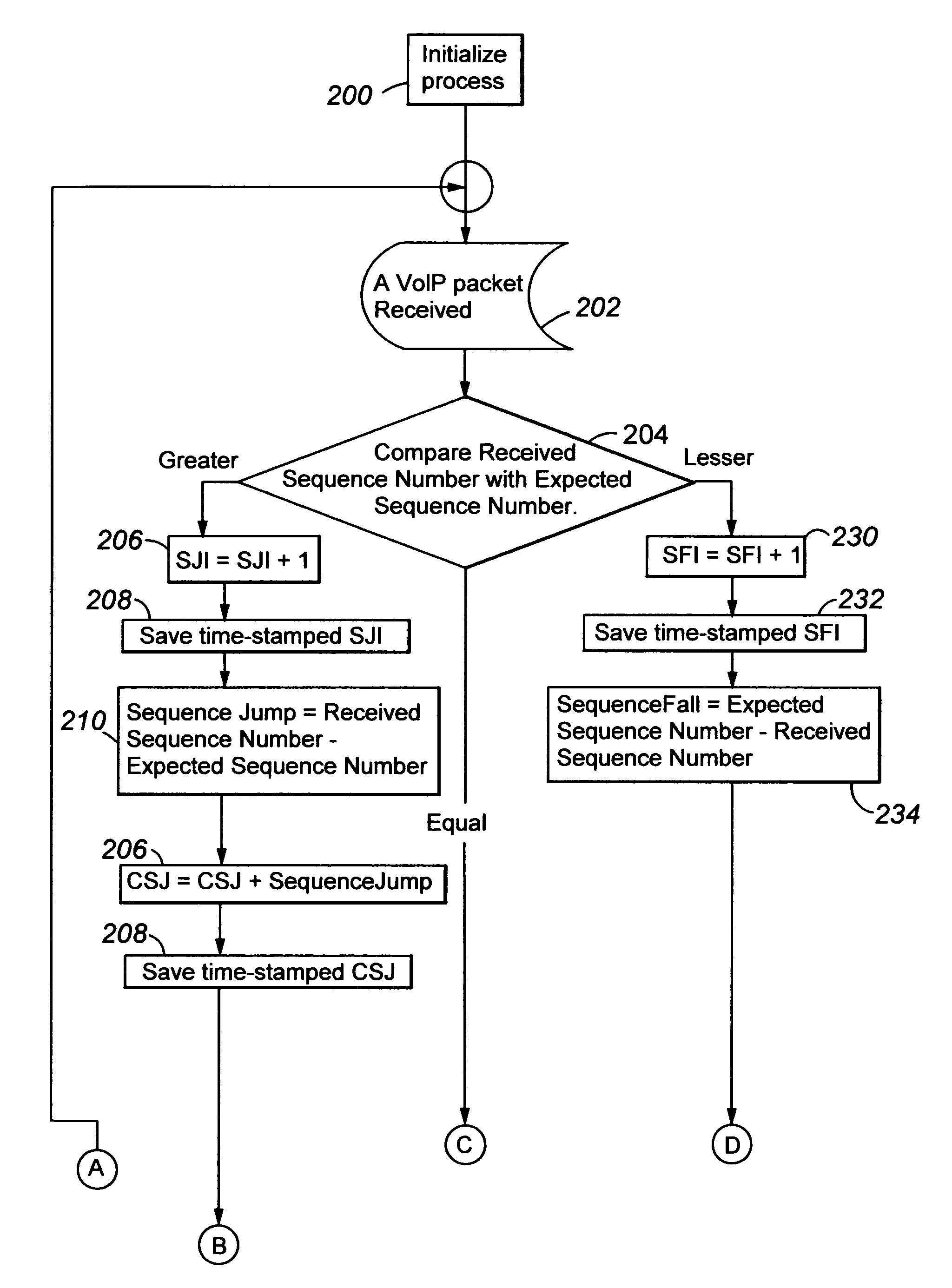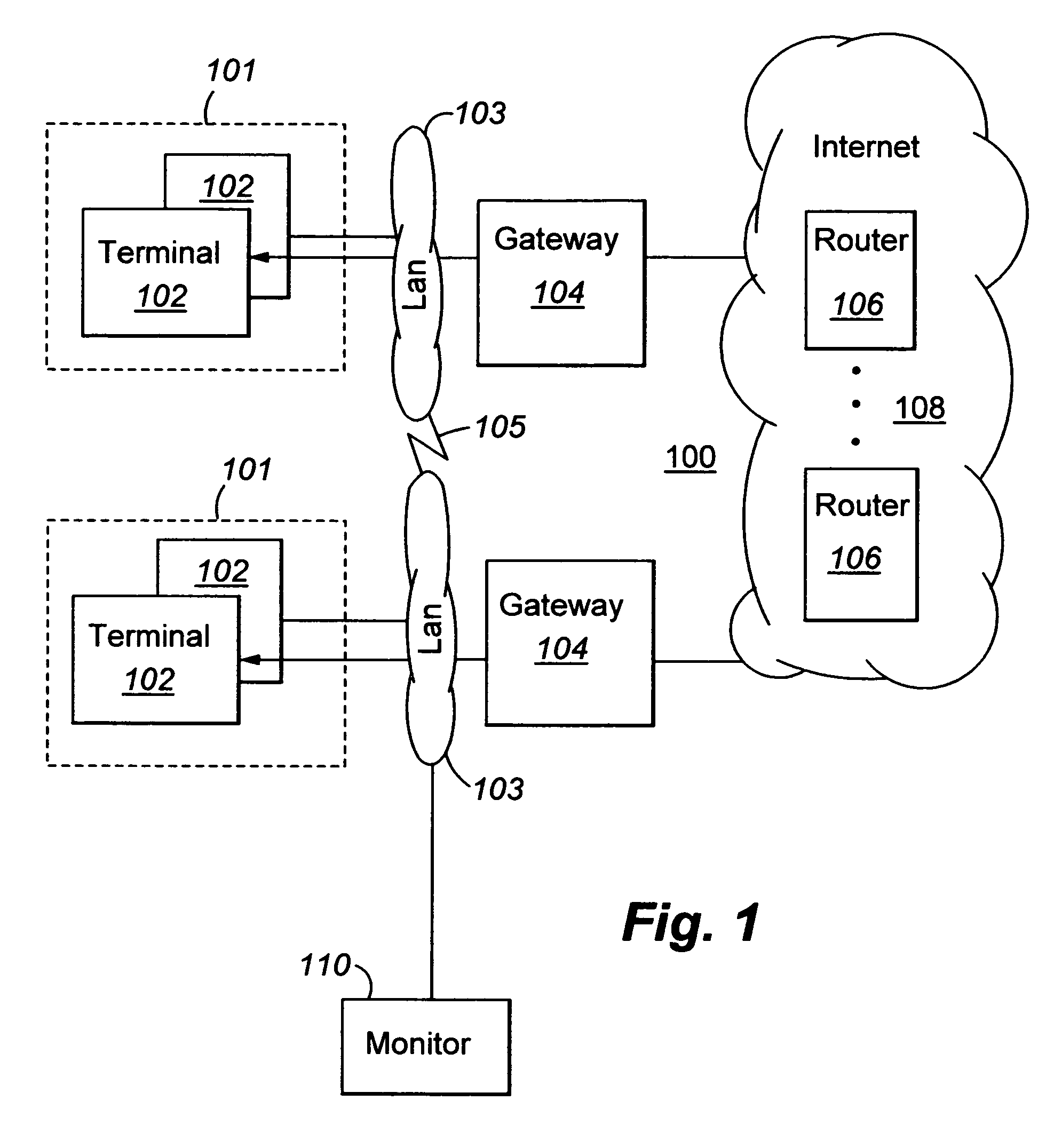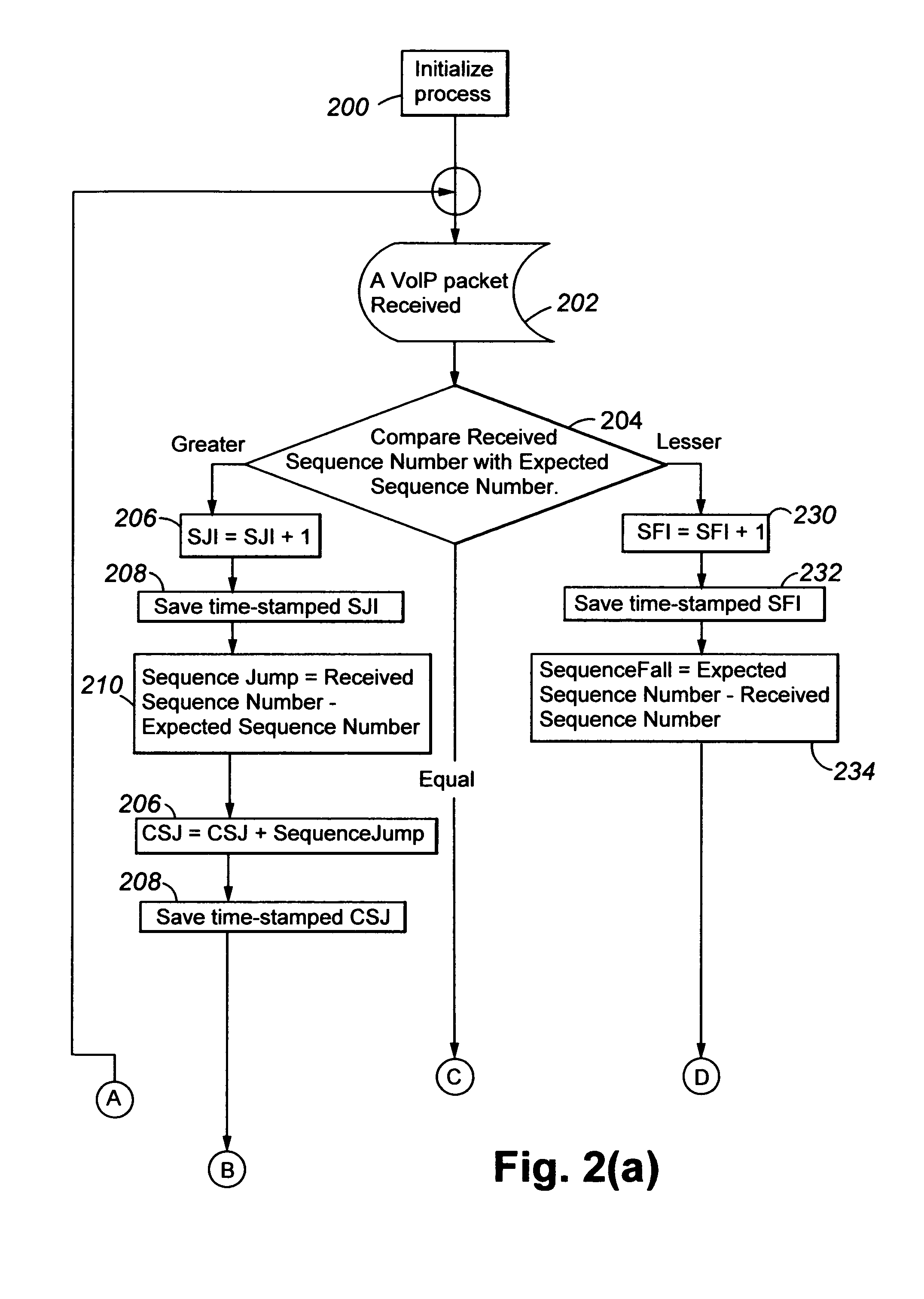Network quality estimation
a network quality and estimation technology, applied in the field of network quality estimation, can solve the problems of packet loss having the greatest effect on voice quality, packet loss may occur, packet loss is bursty in nature,
- Summary
- Abstract
- Description
- Claims
- Application Information
AI Technical Summary
Benefits of technology
Problems solved by technology
Method used
Image
Examples
Embodiment Construction
[0018]FIG. 1 shows a block diagram of a generalized packet transmission network 100. Packet transmission network 100 comprises a plurality of sets 101 of packet terminals 102 (for example, VoIP telephones). The terminals 102 of each set are interconnected with each other by a local area network (LAN) 103 and are connected by packet gateways 104 to a network of packet routers 106, such as internet 108. Additionally, LANS 103 may be directly interconnected by a wide area network (WAN) 105. One or more network-quality monitors 110 may be connected to one or more LANS 110. All elements 102, 104, 106, and 110 usually are stored-program-controlled devices that include storage for storing programs and data and processors for executing the stored programs and using the data, as well as hardware for performing their physical signal transmission, reception, and routing functions. The present invention is typically implemented in program form (as software) although it may be implemented in any...
PUM
 Login to View More
Login to View More Abstract
Description
Claims
Application Information
 Login to View More
Login to View More - R&D
- Intellectual Property
- Life Sciences
- Materials
- Tech Scout
- Unparalleled Data Quality
- Higher Quality Content
- 60% Fewer Hallucinations
Browse by: Latest US Patents, China's latest patents, Technical Efficacy Thesaurus, Application Domain, Technology Topic, Popular Technical Reports.
© 2025 PatSnap. All rights reserved.Legal|Privacy policy|Modern Slavery Act Transparency Statement|Sitemap|About US| Contact US: help@patsnap.com



